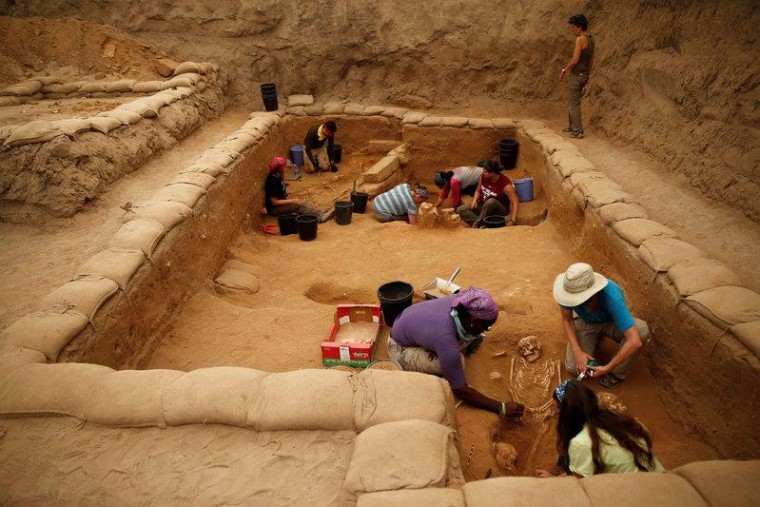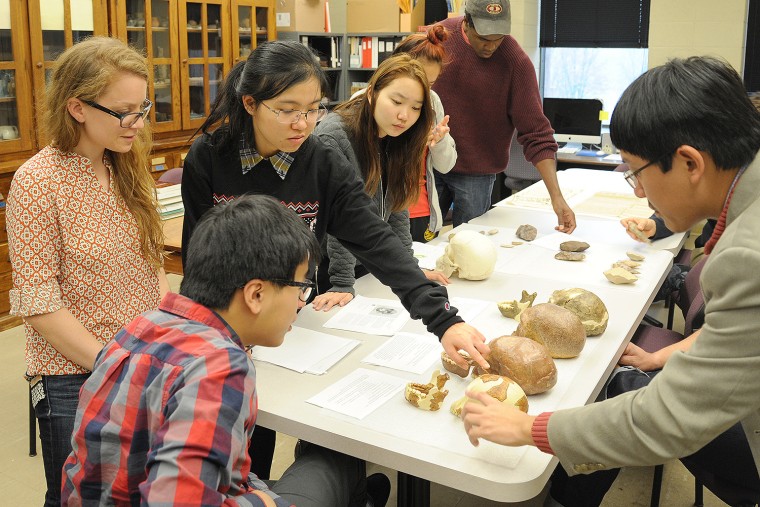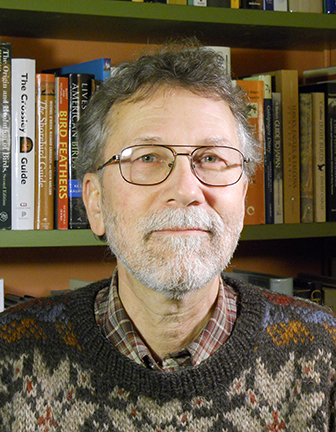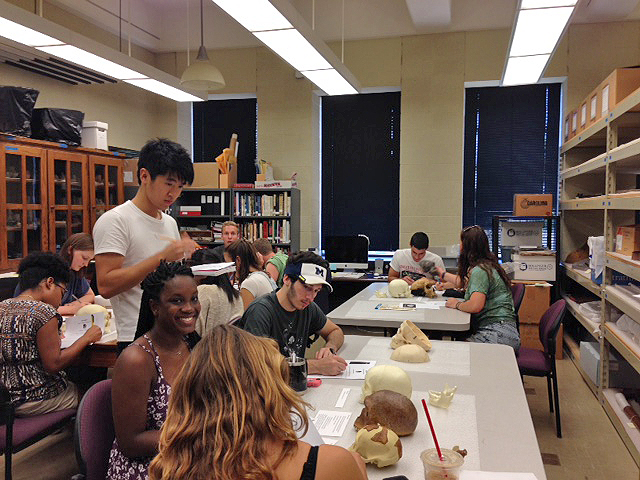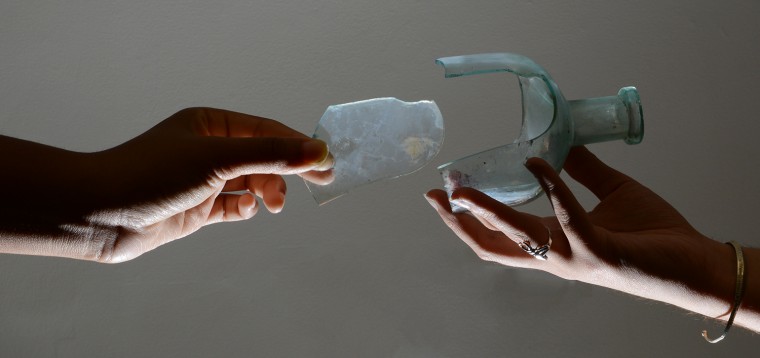Two Wesleyan students, one recent alumna and a faculty member contributed to a groundbreaking discovery of the first Philistine cemetery, a crowning achievement of more than 30 years of excavation in Ashkelon, Israel. Archaeologists and scholars have long searched for the origin of the Philistines, and the discovery of the cemetery is poised to offer the key to this mystery. Findings from the cemetery, dated to the 11th–8th centuries BCE, may well support the claim – long inferred and recorded in the Bible – that the Philistines were migrants to the shores of ancient Israel who arrived from lands to the…
In the 1920s, a team of scientists working in the Zhoukoudian cave system in Beijing, China unearthed Peking Man, a roughly 700,000 year-old sample of Homo erectus. After the communist revolution of 1949, Peking Man became a prominent figure in bringing science and the story of human evolution to the masses. As part of the required reading for the HIST 368 class, History of Science and Technology in Modern China, Ying Jia Tan, assistant professor of history, is having his students read The People's Peking Man, written by Wesleyan alumna Sigrid Schmalzer '94. The People’s Peking Man offers a skilled…
On Oct. 5, Phillip Wagoner, professor of art history, professor of archaeology, was named a co-recipient of the American Historical Association's John F. Richards Prize in South Asian History. The John F. Richards Prize recognizes the most distinguished work of scholarship on South Asian history published in English. Eligibility includes books on any period or field of South Asian historical studies and works which integrate South Asian history with broader global issues and movements. Wagoner shares the prize with Richard Eaton of the University of Arizona. Together, they co-authored the book, Power, Memory, Architecture: Contested Sites on India’s Deccan Plateau, 1300–1600,…
On Sept. 16, students enrolled in the PSYC221 Human Memory course used the Wesleyan University Archaeology and Anthropology Collections for hands-on learning. The class, taught by Erika Fulton, visiting professor of psychology, visited the collections to learn more about memory and the brain. Students compared and contrasted three skulls from disparate time points in human evolution and used their observations to make inferences about how different parts of the brain must have evolved. "They had to think about the relationships among a changing environment, memory demands, and brain lobe development," Fulton said. "I think it was a fun way for them to…
Many people think of archaeology as taking place in exotic locations overseas, not in their own backyard. Yet archaeology projects are continuously being carried out all over the state of Connecticut. On Oct. 18, Wesleyan’s Archaeology Program and Office of Community Partnerships will present the Connecticut State Archaeology Fair to give the public a close-up look at some of these projects. Part of Archaeology Awareness Month in October, the fair will feature many hands-on exhibits and activities for adults and kids. Presenters will represent a full spectrum of archaeology in the state, ranging from local tribes and community groups to…
Professor Phillip Wagoner is the co-author of Power, Memory, Architecture: Contested Sites on India’s Deccan Plateau, 1300-1600, published by Oxford University Press in March 2014. Wagoner is chair and professor of archaeology, professor of art history. Focusing on India’s Deccan Plateau, this book explores how power and memory combined to produce the region’s built landscape, as seen above all in its monumental architecture. During the turbulent 16th century, fortified frontier strongholds like Kalyana, Warangal, or Raichur were repeatedly contested by primary centers—namely, great capital cities such as Bijapur, Vijayanagara or Golconda. Examining the political histories and material culture of both…
Between 2500-1200 B.C., Ashkelon was one of the largest and most important commercial centers around the Mediterranean, and it remained a thriving metropolis under varying degrees of Egyptian control until until the Crusaders conquered the city in the 12th century. Today, the site remains preserved, as does a 3,500-year-old, two-story-high mudbrick-archway. Since 1985, the site has been excivated by the Leon Levy Expedition — a joint project drawing students and faculty from Wesleyan, Harvard University, Wheaton College and Boston University. To date, Ashkelon archaeological digs have revealed a neighborhood of elite Philistine houses dating from the 11th-10th centuries B.C. Every year, Kate Birney, assistant professor…
Students enrolled in the June Summer Session course, Field Methods in Archaeology, participated in several excavations on the triangle of land between Vine Street, Cross Street, and Knowles Avenue, known as the Beman Triangle. Several African-Americans built homes and lived in this area in mid-19th century. Although few above-ground traces now suggest the presence of this community, material about their lives survives in the record of their trash and other archaeological features that remain beneath the backyards of the houses on this land. The course is taught by Sarah Croucher, assistant professor of anthropology, assistant professor of archeology, and provides…
Christopher Parslow, professor and chair of the Classical Studies Department, professor of archaeology, has been selected as a member of the Institute for Advanced Study in Princeton, N.J., for the 2013 fall term. Parslow, a Roman archaeologist specializing in the ancient sites buried by the eruption of Vesuvius, will spend his semester-long residency working on a book on the Praedia (Properties) of Julia Felix in Pompeii. He was chosen on the recommendation of the faculty of the School of Historical Studies at the Institute for Advanced Study, one of the world’s leading centers for theoretical research and intellectual inquiry. Each…
Between Vine Street, Cross Street and Knowles Avenue near Wesleyan, an innocuous looking triangle of land forms the “Leverett Beman Historic District,” listed on the State Register of Historic Places and part of the Connecticut Freedom Trail. This area is the site of one of the earliest planned African American communities in the United States. During the spring of 2012, Sarah Croucher, assistant professor of anthropology, assistant professor of archaeology, led an archeological excavation at the "Beman Triangle" site. Several Wesleyan students and community members participated in the dig and unearthed dozens of materials relating to healthcare and everyday practices,…
In this video, Sarah Croucher, assistant professor of anthropology, assistant professor of archaeology, discusses her community archaeology project in the "Beman Triangle" in Middletown, Conn. The houses built on this land from the 1840s were home to a community of African Americans living in Middletown, tied to the nearby A.M.E. Zion Church. Artifacts discovered in the area from 19th century trash pits shed new light on the lives of the community members, and the longstanding relationship between the church, Middletown and Wesleyan. Read more about Croucher's project in this past Wesleyan Connection article. #THISISWHY [youtube width="640" height="420"]http://www.youtube.com/watch?v=ty_fiNkNdtg[/youtube]
In this issue of The Wesleyan Connection, we ask 5 Questions of Sarah Croucher, assistant professor of anthropology, assistant professor of archaeology, assistant professor of feminist, gender, and sexuality studies. Croucher will lead an archaeological dig on the site of the Beman Triangle in Middletown on April 28-29. The public is welcome to attend. To view photos of the dig on April 14-15 click here. Q: Professor Croucher, what exactly is the Beman Triangle and what is its significance to the history of Middletown? A: The Beman Triangle is the land between Vine Street, Cross Street, and Knowles Ave., where…


